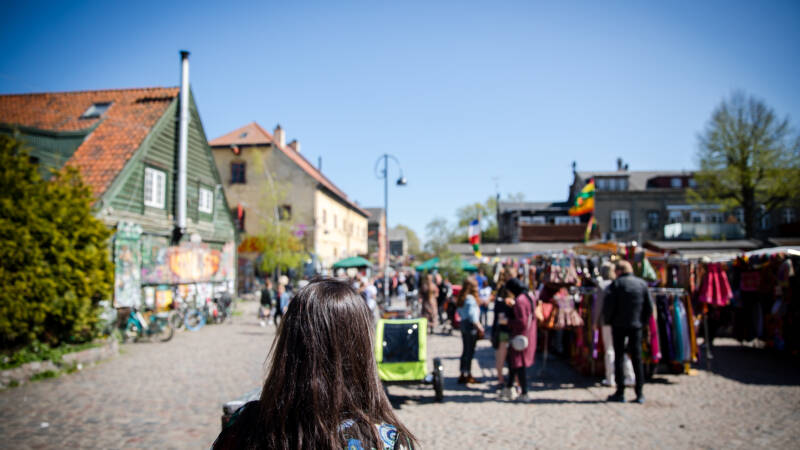Denmark is known for its independent mindset, creativity, and free-spirited nature. Nowhere is this captured more than in Freetown Christiana.
This neighborhood in the middle of Copenhagen is a self-proclaimed autonomous town, free from the rules of Denmark or the EU. Christiana is unlike anywhere else in the world; a sort of hippie commune of about 600 residents, where no one owns any property, violence, and guns aren’t allowed, there are no cars, and cannabis is sold freely out of kiosk booths on “Pusher Street.”
It was founded as a separate, self-governed society
Christiana was originally formed in 1971 when a bunch of squatters took over abandoned military barracks. Journalist Jacob Ludvigsen declared the organized community, which set out to build a new society from scratch. “For those who feel the beating of the pioneer heart there can be no doubt as to the purpose of Christiania,” Ludvigsen wrote. “The objective of Christiania is to create a self-governing society whereby each and every individual holds themselves responsible over the wellbeing of the entire community.”
It has a self-created collective culture
Though somewhat of a social experiment, a collectivist, socialist – perhaps even anarchist – community quickly flourished. An internationally acclaimed theater group, Solvognen, was formed, along with meditation and yoga classes, schools, community gardens, and the like. Artists, musicians, students, and intellectuals made Christiana home, along with people who were drawn to the sharing economy such as the homeless, unemployed, immigrants, single mothers, and others down on their luck.
It is independent of Danish rule
The people of Christiana declared themselves independent of the Danish government and formed their own rules. Among those rules were bans on violence, theft, weapons, and hard drugs. After questions about ownership and land use with the government, the community created a foundation and officially purchased the land at a below-market price in 2012.
No one owns property
Residents do not own homes or property; you apply for a home and, when selected, it is given to you for your use. The entire town is an eclectic hodgepodge of homemade houses, repurposed buildings, gardens, workshops and galleries, organic cafés, and music or performing arts venues.
Anyone can visit
Today, Christiana is the 4th most popular tourist attraction in Copenhagen, with an estimated half-million people visiting each year. It is open to the public, and visitors are welcome. However, photography once inside the community is prohibited – particularly around Pusher Street with its hash stalls, and it’s well-advised not to take photos. At each entrance are signs stating the rules and “do’s” and “don’ts” for visitors.
Various community centers provide meeting places and social venues
There are a number of particularly interesting places to check out. The Gay House is a cultural meeting place for the LGBT community, with speakers, exhibitions, performances, etc. The Grey Hall is a concert hall located in an 1891 building that was originally the riding venue for the army; Loppen is another alternative concert venue.
The community has its own flag and currency
Christiana has its own flag and its own currency, the Løn; although euros and credit cards are accepted at most businesses. The blacksmith shop is the oldest business in Christiana, and at the Cykler place, you can rent a bicycle. Having a meal here is encouraged, and everything is fresh and organic. Try the vegetarian eatery Morgenstedet or Spiseloppen restaurant.
It has a free-thinking spirit
Christiana is free-thinking, always colorful, and sometimes controversial – particularly around the hash and marijuana sold openly from vendor stalls. There have been skirmishes with the police and government, and walking along Pusher Street is perhaps the only place in the community that can feel a bit uneasy; although overall Christiana is a very peaceful and safe place. Again, do not take photos or even have a camera or phone out, especially when walking through this area.
Filled with murals, cafés, and music
Enjoying the interesting architecture, the colorful murals, eateries, shops, music concerts, and performances that are throughout Christiana offers a glimpse into this lifestyle that isn’t really found anywhere else.










